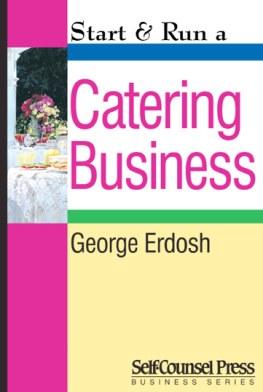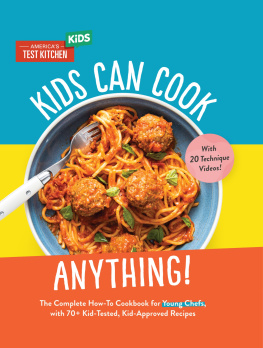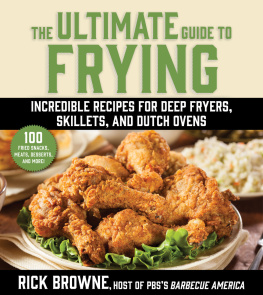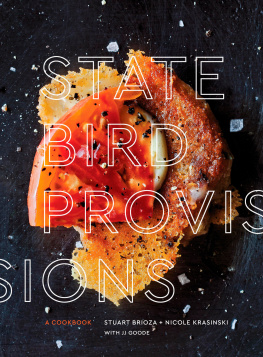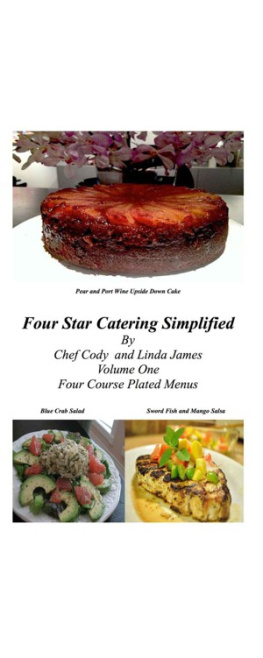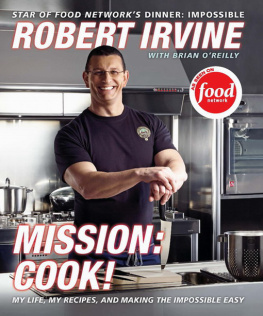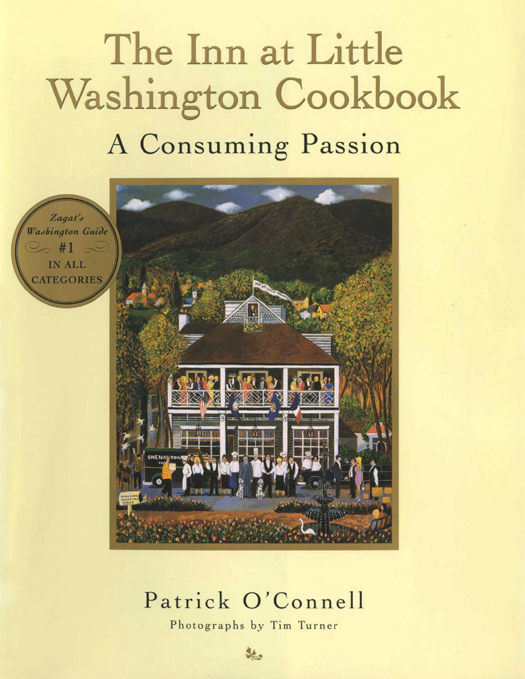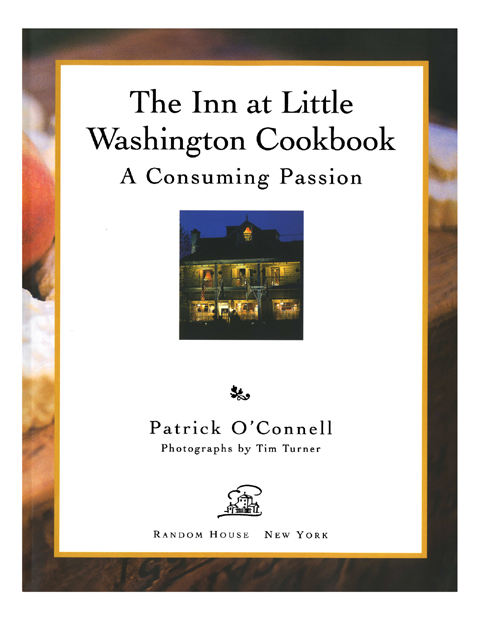Copyright 1996 by Patrick OConnell
All rights reserved under International and Pan-American Copyright Conventions. Published in the United States by Random House, Inc., New York, and simultaneously in Canada by Random House of Canada Limited, Toronto.
eISBN: 978-0-679-64496-5
Library of Congress Cataloguing-in-Publication information is available.
Random House website address: http://www.randomhouse.com/
v3.1
A CKNOWLEDGMENTS

This book evolved with the help and inspiration of many individuals to whom I am indebted: First, the former editorial director of Random House, Jason Epstein, whose passion for cooking provided the necessary catalyst to get the project under way. Working with photographer Tim Turner was a joyous experience; his artistry contributed another dimension to my work. The supplementary photographs by Kay Chernush and Eric Rasmussen brilliantly capture the singular beauty of the surrounding countryside. The enthusiasm of the books designers, Adam Kallish, Elizabeth Nelson, and Pat Noonan-Hastings of Trope: Communication by Design, was a godsend. Bob Barnett, my attorney, managed to make all the legal negotiations stress-free. Laura Patton, my assistant, in addition to typing the manuscript, managed to keep the project on track. My kitchen staff helped compose, reduce, and test some of the recipes and had to put up with additional intensity from me as the books deadline approached. Ellen Brown helped with the editing of the final few recipes.
Special thanks are extended to our local farmers and purveyors for their cooperation in working with us on this project; for allowing photographers to wander through their orchards, barns, and chicken houses; and for lending us props for our photo shoots. We also appreciate their commitment to providing us with the superlative raw ingredients that are the essence of great cooking. We are most grateful to Goat Hill Farm, Jordan River Farm, Moores Orchard, Henry Hudson, Elizabeth Pierson, Tom Calhoun of Calhouns Ham House, and the Sperryville Antique Center for being such good neighbors.
I thank Bernard Loiseau, a friend and one of Frances most celebrated chefs, for donating a recipe as a souvenir of our cooking together on his first trip to America.
A special acknowledgment to my partner, Reinhardt Lynch, whose support and encouragement helped make this book possible.
C ONTENTS

I NTRODUCTION

Probably the best and the worst thing that ever happened to me was that I got a job in a restaurant at the impressionable age of fifteen.
The addiction was immediate. Once I discovered the pace and intensity of this delicious business, I was hooked. I found restaurant people to be fascinating characters. Whoever was writing this script had an outrageous sense of humor, and I wanted a part in the production.
I was supposed to have become an actor but soon found the living theater of the restaurant world more compelling than the stage and discovered that working with food gave me a much-needed grounding and connection with the real world, which contributed to my remaining somewhat sane. Running a restaurant allows me to be the producer, director, set designer, and lead player in a wonderfully fractured nightly performance in which the world of complete illusion in the dining room is brilliantly juxtaposed with the blood-and-guts reality of the kitchen. The fact that no scene can ever be captured or exactly replicated adds a certain spice to the intensity of the moment.
This book is a distillation of my thirty years in the kitchen. Many of the recipes I have included are like old friends who have been brought from distant places for a culinary version of This Is Your Life. Each one has a story to tell and relates to the others. Collectively, they define a style and taste that are uniquely American, though full of influences from other countries.
This is not a typical chefs cookbook of esoteric, egomaniacal, and impossibly complicated formulas that only a wizard with a staff of eighty would attempt to produce. The recipes assembled here make up a practiced, finely honed repertoire of elegantly simple and straightforward dishes that are continually evolving. Everyday ingredients are elevated to new heights through surprising combinations and seductive presentations.
As a self-taught chef, I have learned my most valuable lessons through making mistakes. I hope this book will keep you from making similar ones. You should be encouraged to know that I taught myself to cook by reading cookbooks and through years of trial and error. I was recently quoted in the book Becoming a Chef as saying that cooking cant be taught, it has to be caught rather like a fever, which then takes on a momentum of its own. This book is intended to help you catch it to become consumed with the passion.
In addition to some of my favorite recipes, I want to share some of the less tangible secrets of creating a memorable event centered around a meal. Great food is simply one component of a magical dining experience.
In planning a menu, I always aim for an element of novelty. A guest expects the food to be delicious and perfectly executed but also craves the unexpected surprisesomething to remember and talk about. Often its the tiniest details that leave the most indelible memories. They represent the thoughtfulness that goes into making an occasion special and are often personal touches that cost little or nothing.
For example, hand-writing individual menus on interesting little cards that include the date lets the guests know what theyre eating and gives them an inexpensive souvenir of your party. Enhancing the moment by emphasizing the season in both your choice of food and its presentation strengthens the memory-making potential of a dinner party. Try to make each meal a celebration of the moment: look for ingredients that symbolize the time of year and try to do something out of the ordinary with them.
My suggestion for the home cook has always been to build confidence and a repertoire by mastering one well-conceived three-course meal, re-creating the same three dishes over and over, perhaps one night a week for six or eight weeks, until youve made every mistake possible and learned something from each one. By then, your menu will feel like a part of you, and youll be amazed at how quickly you can accomplish the preparation. At that point, youll be ready to invite guests, who more than likely will be astonished at what an accomplished cook you are, even though secretly you may not be able to cook anything but those three dishes. Youll then have the confidence to proceed and live up to your newfound reputation as a wonderful cook.
Like a good wardrobe, many of the components in my recipes are interchangeable. I invite you to rearrange them as you like. At The Inn at Little Washington we sometimes joke about spinning the dial in choosing the accompaniments to the dishes on the menu. One day the tangle of tart greens may be served with the rabbit sausage and the next day with the venison. An unusual sauce may complement five or six different foods. Mixing and matching is part of the fun. Ive provided suggestions for substitutions with the recipes, as well as alternative ways of using various components interchangeably. Flexibility is essential to creative cooking.


